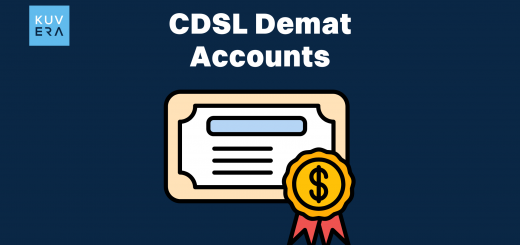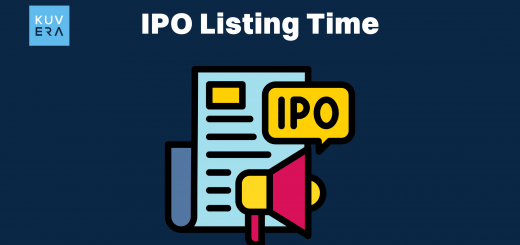A New Fund Offer (NFO) is a major event in the mutual fund industry. Investors seeking opportunities in mutual funds India should closely monitor NFO launches, as these offer new themes and sectors for investment. The mutual funds India landscape is growing rapidly, with increasing options for investors looking to diversify their portfolios. Many investors in mutual funds India aim to maximise returns through strategic investment in newly launched schemes. The regulatory framework for mutual funds India ensures transparency, making it an attractive option for investors. Understanding how mutual funds India operate helps in making informed decisions when investing in NFOs.
Here is what you need to know about NFOs:
Definition
An NFO is the first opportunity for investors to buy units of a newly launched mutual fund scheme.
Pricing
Units are typically issued at a fixed price, usually ₹10 per unit, during the subscription period. The price may vary for different categories of funds.
Purpose
NFOs enable Asset Management Companies (AMCs) to raise capital for diverse investment strategies.
Why Are NFOs Important?
Investing in NFOs can offer several advantages:
1. Access to New Strategies
NFOs often introduce innovative investment themes or sector-specific funds.
2. Potential for High Returns
Early investments can yield significant returns if the fund performs well after launch.
3. Low Entry Barriers
With units priced at ₹10, even small investors can participate without substantial capital.
4. Diversification Opportunities
Investing in an NFO allows individuals to expand their portfolios with new assets aligned with their investment goals.
Tracking mutual fund returns over time helps investors determine which fund managers are consistently performing well. A critical aspect of investing in mutual funds is evaluating mutual fund returns against benchmark indices to assess efficiency. When considering NFOs, investors should analyse projected mutual fund returns to estimate potential earnings. Some NFOs offer structured strategies aimed at improving mutual fund returns over the long term. Reviewing past trends in mutual fund returns can provide insights into expected performance for different types of funds.
List of New NFOs Launched in 2025
The below table provides a snapshot of the new NFOs available for investors in 2025, highlighting their categories and underlying assets:
| Fund Name | Category | AMC | TER (Approx.) | Underlying Asset Types |
|---|---|---|---|---|
| UTI Quant | Equity – Thematic | UTI Mutual Fund | 1.00% | Thematic Equity |
| Bandhan Nifty Alpha Low Volatility 30 Index | Equity – Large Cap | Bandhan Mutual Fund | 1.00% | Large Cap Equity |
| WhiteOak Capital Quality Equity | Equity – Thematic | WhiteOak Capital | 1.00% | Thematic Equity |
| ICICI Prudential Rural Opportunities | Equity – Thematic | ICICI Prudential | 1.00% | Thematic Equity |
| Mirae Asset Small Cap | Equity – Small Cap | Mirae Asset | 1.00% | Small Cap Equity |
| Bajaj Finserv Multi Cap Reg Gr | Multi Cap | Bajaj Finserv | 1.00% | Large, Mid, and Small Cap Equity |
| Nippon India Active Momentum Reg Gr | Multi Cap | Nippon India | 1.00% | Multi Cap |
| Mahindra Manulife Value Reg Gr | Value | Mahindra Manulife | 1.00% | Value Stocks |
| HSBC Financial Services Reg Gr | Financial Services | HSBC Mutual Fund | 1.00% | Financial Sector Stocks |
Source: AMFI India
Understanding NFOs
A New Fund Offer (NFO) is essentially:
- The first opportunity for investors to buy into a newly launched mutual fund scheme.
- A limited-time subscription period where units are issued at a fixed price before trading begins at Net Asset Value (NAV).
- Access to newly introduced investment strategies and themes not previously available in the market.
The mutual fund return on an NFO depends on the fund’s asset allocation, sector exposure, and overall market conditions. Many investors evaluate mutual fund return history of similar funds to predict how a new NFO might perform. A well-diversified portfolio enhances the potential for a better mutual fund return, especially in fluctuating markets. Investing in NFOs requires an understanding of expense ratios and fees, which can impact overall mutual fund return. Comparing the mutual fund return of various NFOs helps investors decide which fund aligns best with their goals.
The mutual fund NFO launch process involves extensive research and regulatory approvals before an NFO is made available to the public. AMCs strategically plan the mutual fund NFO launch to target specific investor segments and market trends. Many investors track the mutual fund NFO launch calendar to stay updated on new investment opportunities. Understanding key documents related to a mutual fund NFO launch helps investors assess the risk-reward ratio of new schemes. The success of a mutual fund NFO launch depends on market conditions and investor sentiment at the time of offering.
Comparison: NFO vs IPO Investing in India
| Factor | NFO (New Fund Offer) | IPO (Initial Public Offering) |
|---|---|---|
| Definition | A new mutual fund scheme launched by an AMC. Investors buy units before the fund starts operating. | A company's first public sale of shares to raise capital. Investors buy company stocks. |
| Investment Type | Mutual funds (diversified portfolio managed by professionals). | Equity shares (direct ownership in a company). |
| Pricing | Fixed price (often ₹10 per unit) during the NFO period; later determined by NAV. | Share price determined by book-building process and market demand. |
| Risk Factor | Higher risk due to lack of past performance data. | Higher risk due to market volatility and company-specific factors. |
| Regulatory Body | Regulated by SEBI’s mutual fund guidelines. | Regulated by SEBI’s IPO listing regulations. |
| Returns | Dependent on fund performance post-launch. No guaranteed returns. | Stock price may rise or fall based on company performance and market conditions. |
| Liquidity | Open-ended funds offer liquidity; close-ended funds have a lock-in period. | Stocks are traded on exchanges, providing liquidity. |
| Investor Profile | Suitable for investors seeking diversification and professional fund management. | Suitable for those willing to take direct market risks with individual stock investments. |
Investors need to carefully evaluate NFO investing risk before committing capital to a new scheme. The NFO investing risk can be higher for sector-specific funds compared to diversified funds. A major factor contributing to NFO investing risk is the lack of a proven track record for newly launched funds. Assessing fund manager expertise is essential in mitigating NFO investing risk and ensuring effective portfolio management. To minimise NFO investing risk, investors should compare new schemes with existing funds in similar categories.
Wrapping Up
In summary, New Fund Offers (NFOs) present unique investment opportunities for individuals seeking to diversify their portfolios and explore new mutual fund strategies. With multiple options available in 2025 across different categories and asset types, investors have ample choices based on their risk appetite and financial goals.
Before investing in an NFO or any financial product, it is advisable to conduct thorough research and consult a financial advisor.
This knowledge can help investors make well-informed decisions that align with their financial objectives. As always, investors need to consider risk appetite and investment horizons before exploring these mutual fund opportunities.
Interested in how we think about the markets?
Read more: Zen And The Art Of Investing
Watch here: Is UPI Killing the Toffee Business?












